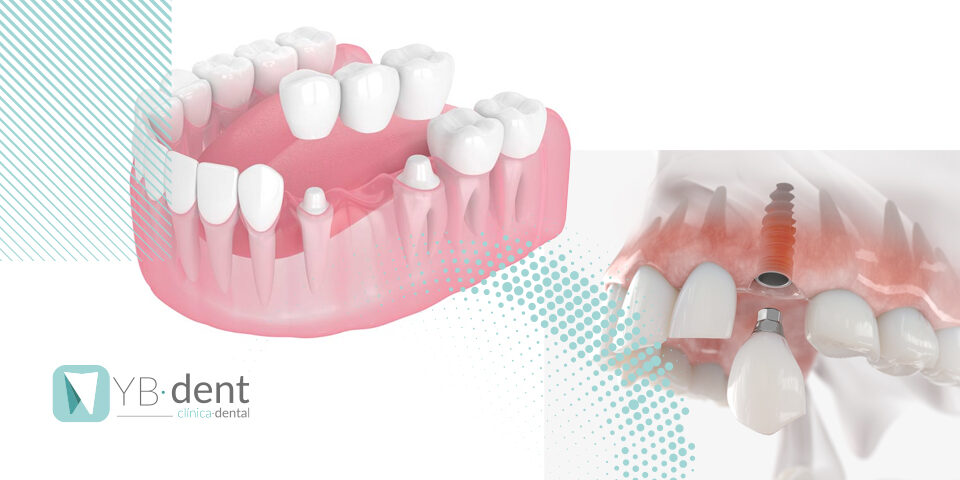¿Qué es la placa bacteriana?

Si no mantenemos una correcta higiene bucodental podemos estar poniendo en peligro nuestra salud por distintas razones, una de ellas es la placa bacteriana. Desde Clínica YB Dente te contamos en que consiste, consecuencias y prevención. Léelo a continuación.
Pero, ¿qué es la placa bacteriana?
La placa bacteriana es una fina película transparente y con una textura pegajosa, a la que denominamos película adquirida, que contiene unas bacterias que se acumulan de manera natural en la superficie dental, sobre todo en la línea que rodea las encías entre las cuatro y doce horas después del cepillado.
La cavidad oral cuenta con su propio microbiota compuesta por algunas bacterias que no resultan perjudiciales. Sin embargo, una deficiente higiene bucal provoca que está se acumule y se calcifique al entrar en contacto con alimentos y la propia saliva, generando el sarro o cálculo dental.
Y, ¿por qué se produce? La placa bacteriana se produce a partir de los restos de alimentos que no han sido debidamente limpiados, acumulándose en los espacios que quedan entre los dientes, permitiendo la proliferación de bacterias.
Para poder eliminarla, ya no es suficiente un enjuague bucal o cepillado, resulta imprescindible visitar al odontólogo para una limpieza dental para acabar con la placa en la totalidad de la superficie dental y los espacios interdentales.
Si por el contrario, esta placa se encuentra subgingivalmente, es decir por debajo de la encía, ya será necesario realizar otros tratamientos más efectivos, como el raspado y alisado de la raíz.
¿Qué produce la placa bacteriana en nuestra boca?
Dependiendo de la bacteria que predomine sobre los dientes o encías, tendrá diferentes efectos sobre la salud bucodental. Te los mostramos:
Caries
Existen caries si abundan bacterias que producen ácido láctico al metabolizar los azúcares, depositándose en los dientes y formando la tan temida caries. ¿Su función? Dañar y debilitar el esmalte dental.
Enfermedad periodontal
Esta enfermedad se forma porque las bacterias predominantes producen sustancias básicas al metabolizar los azúcares o plaza periodontopatogénica. Esta causa inflamación y posterior destrucción del periodonto, lo que se conoce como gingivitis o periodontitis.
La gingivitis es una enfermedad leve de las encías y supone el inicio de la enfermedad periodontal. Actúa inflamando e infectando los tejidos que soportan los dientes: encías, ligamentos periodontales y tejido alveolar.
Por el contrario, la periodontitis es una patología muy común que afecta a los tejidos ubicados entre el diente y el hueso, provocando una inflamación y sangrado de las encías, movilidad dental e incluso pérdida de piezas dentales. Esta enfermedad requiere un tratamiento continuado para preservar la salud dental.
Si no se trata, puede provocar la destrucción de las encías y de los huesos, y posterior pérdida de dientes.
Placa inocua
Las bacterias presentes son muy pocas y no pueden dañar los dientes ni provocar enfermedades periodontales. Es el tipo de placa que tiene algunas personas que poca higiene bucodental que nunca llegan a sufrir problemas dentales.
Prevención de la formación de la placa bacteriana
¿Te gustaría saber cómo prevenir la placa bacteriana? Las medidas de prevención están relacionadas con la higiene bucodental y con los hábitos alimentos. Por este motivo, te contamos en este post todo lo que tienes que hacer para tener una salud bucodental de diez:
- Cepillarse los dientes después de cada comida
- Usar el hilo dental al menos una vez al día, para eliminar los restos de comida que quedan entre los dientes y que el simple cepillado no elimina. También existen los cepillos interdentales para que la limpieza entre los dientes sea mayor. Un complemento ideal, sería el irrigador dental.
- Empleo del enjuague bucal, para completar la limpieza y dejar un aliento fresco.
- Limitar el consumo de azúcares y almidones.
Asimismo, las visitas periódicas al dentista, cada 6 meses o cada año, son necesarias para realizar una revisión y una limpieza dental profesional. En definitiva, todas estas acciones en su conjunto son suficientes para mantener una buena salud bucodental.
Desde la Clínica dental YB Dent te recomendamos cuidar la salud bucal para evitar afecciones como la placa bacteriana. Si requieres de nuestros servicios o tienes alguna duda con respecto a tu salud ponte en contacto con nosotros. ¡Estaremos encantados de atenderte!



